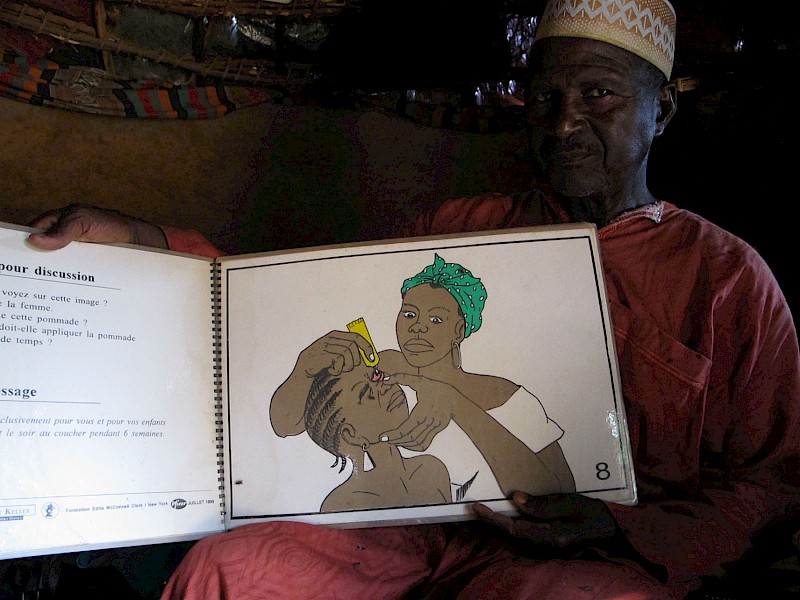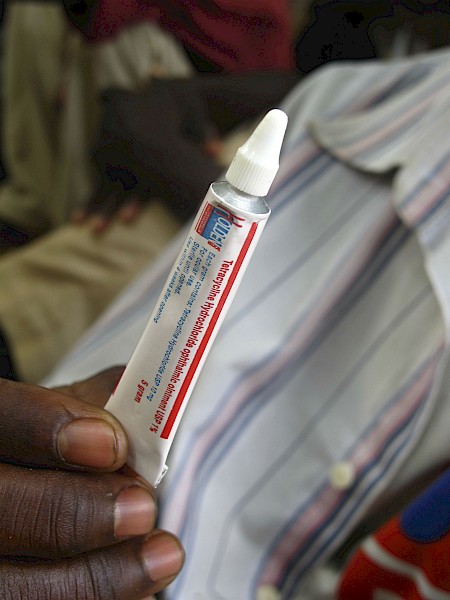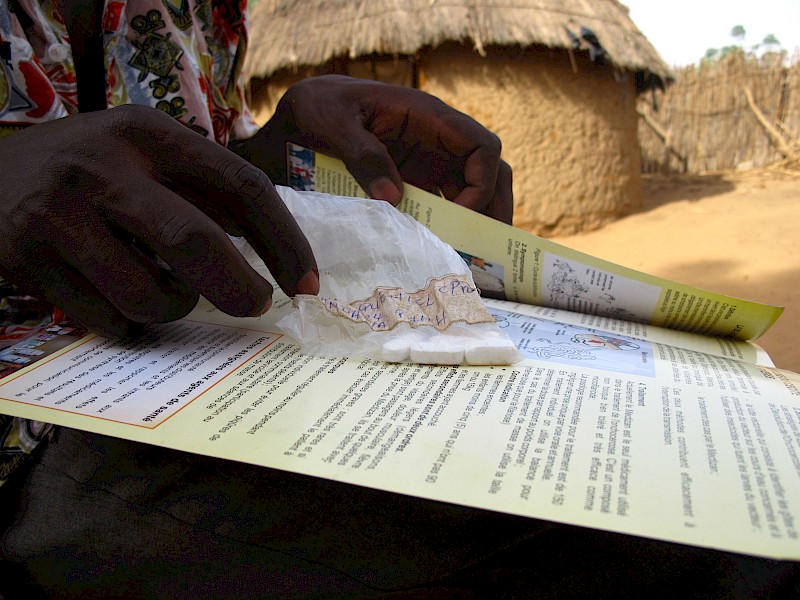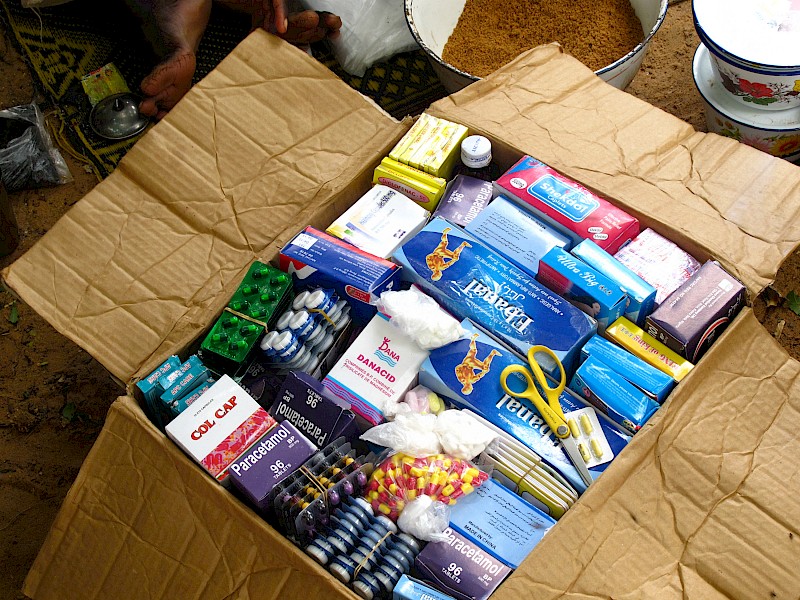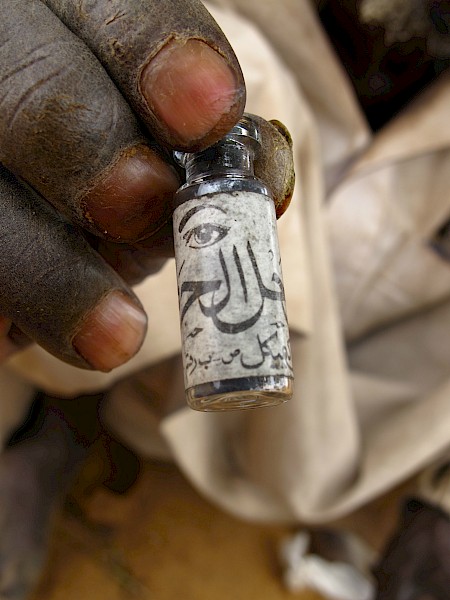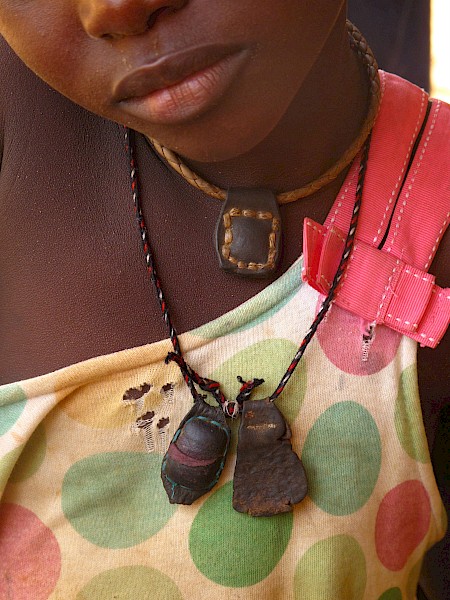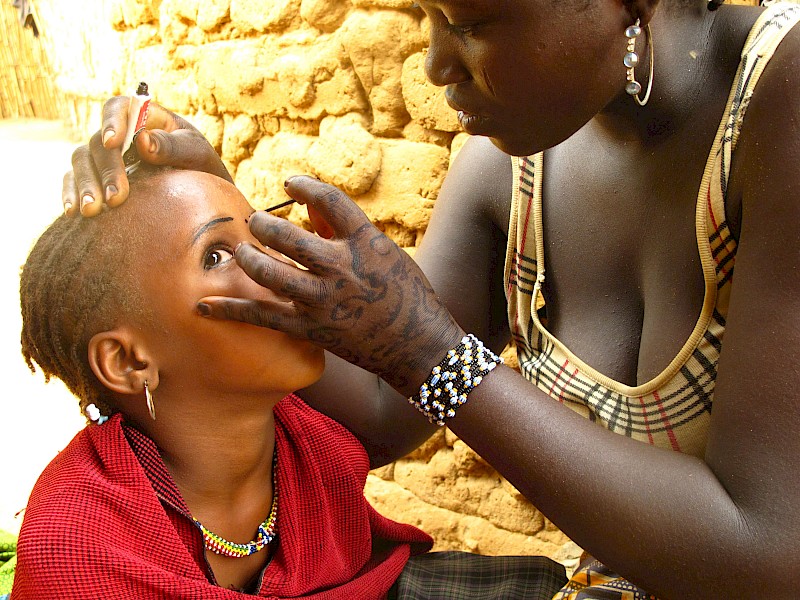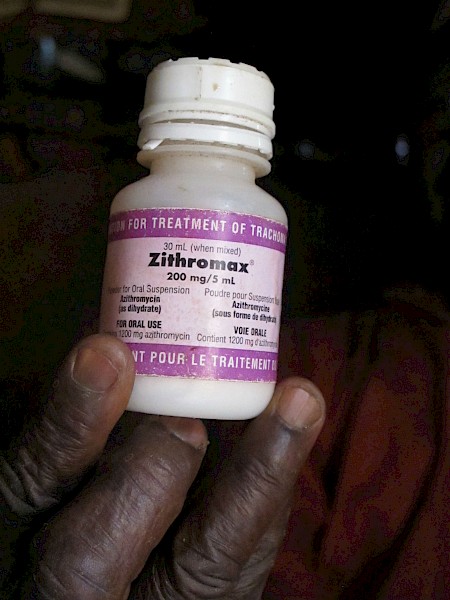A medicine for every sickness
A visual reflection on the treatment of eye disease in rural Niger
—
‘To speak of the representation of a sickness is always slightly abusive … it’s like basing the description of a film on a single still image’ (Jaffré 1999, 353; my translation)
Global public health projects disseminate not only pharmaceutical medications and medical technologies, but also images that illustrate disease, health, and treatment. The circulation of such images is often central to the execution of these projects and can have a significant impact on understandings of health and illness. Communities deemed ‘at risk’ may encounter such images everywhere from posters and T-shirts to medical flip charts. But these are not the only ways of understanding disease. This essay presents a series of photographs to explore the multiple understandings, experiences, and strategies that people drew on in order to manage eye health in Kawari, a rural village in Niger where I lived and worked for periods of time between 1999 and 2010.
The Global Trachoma Elimination Program being implemented by the government of Niger works to create shared biomedical understandings of trachoma, its prevention, and its treatment, largely through the dissemination of images. These images are circulated by community volunteers trained to participate in the annual distribution of the oral antibiotic azithromycin (donated by Pfizer under the brand name Zithromax) and tetracycline ointment, and to provide health education messages that encourage the use of tetracycline ointment for the treatment of every active eye infection.
From a biomedical perspective, trachoma is a bacterial conjunctivitis that causes red, irritated, and painful eyes, which may lead to blindness if repeated infections (often developed in childhood) are left untreated. From the perspective of my interlocutors, trachoma is a bothersome yet ‘normal’ part of daily life in rural Niger. Over the course of my fieldwork, approximately one-third of the children I encountered were infected with trachoma, and a handful of adults in the community showed signs of advanced disease.
Although the elimination campaign increased biomedical understandings of eye disease – for example, the notion that trachoma is caused by a lack of sanitation and hygiene – people did not generally draw on these kinds of biomedical understandings to explain the eye problems they experienced, attributing them more often to foreign objects in the eyes or a symptom of teething in babies. And yet, medications promoted by the elimination campaign, such as tetracycline ointment, were used to treat a variety of eye problems in the village. In many moments, these medical technologies circulated independently of biomedical understandings of disease. In other moments, biomedical and nonbiomedical understandings of eye disease collided and combined to create novel configurations of prevention and care.
‘There is a medicine for every sickness’, I was often told by my interlocutors. In Kawari, residents accessed multiple frameworks for understanding and addressing ill health, experimenting with different medications and medical systems until symptoms disappeared. These included Islamic and plant-based remedies, often used alongside biomedical treatments distributed by public health programs.
When asked what his customers use to treat eye problems, Souley held up a tube of tetracycline ointment manufactured by a Dutch company for the African market. It was similar to the one being distributed by the government’s elimination program at that time. Souley sold this medication at the makeshift store he operated in the village center. The cardboard box of brightly colored pills and other medications – ranging from paracetamol to sex enhancers (‘Ultra Big’) – sat next to vegetables, spices, and various household goods. A pair of scissors lay next to the box and was used to cut up blister packages of pills. This allowed customers to purchase the exact number of pills they wanted or were able to pay for. At 100cfa – the price of three cigarettes – the tube of tetracycline ointment Souley held in his hand was rather affordable. Nevertheless, he reported that clients usually asked for it only after trying several other cheaper solutions, including waiting for the infection to subside ‘on its own’. ‘It’s really good medicine. It comes from Europe’, he told me. I noted that the instructions and information provided on the packaging were written in English – a language in which few in the village were proficient.
‘The medication that they sell at the pharmacy is good for some things, but not everything. This medicine comes from our traditions’, Gawa told me. He was referring to the glass bottle with Arabic writing on it that he held in his hand, which used to contain a black powder. He bought it at the Matameye Friday market (about an hour’s walk from the village), from a man who also sells copies of the Qu’ran, prayer beads, and incense imported from Saudi Arabia and North Africa. Despite obvious outside influences from the Arab world, the individuals I knew included these treatments in what they referred to as ‘Hausa’ medicine. Gawa was told by the seller to mix the powder with water in order to make eyedrops that would treat his cloudy vision. Gawa chose this medication for its ‘traditional’ properties, but he later told me that he had also used medicine from the pharmacy to treat his eye problems. Neither of the treatments worked. ‘I am still searching for the right medication’, he concluded.
The use of locally produced herbal remedies was also positioned within the framework of ‘tradition’, and their low price made them even more attractive. Hajia Fati unwrapped the knot at the end of the blue scarf that she wore around her head to show me the pounded herbs that she had just purchased for 50cfa (about eight euro cents) to treat her dry and itchy eyes. She had previously tried using tetracycline ointment, but saw no results. This new medication, made from plants collected and pounded by an older widow in the village, gave her hope because, as she put it, ‘It is our medicine. I can’t say that it is better, because every sickness has its own medicine. Sometimes traditional medicine is the right medicine to treat our own diseases’.
 Qu'ranic verses that used to make amulets to ward off bad health
Qu'ranic verses that used to make amulets to ward off bad healthIn order to prevent the symptoms of trachoma in young children and promote overall good health, amulets containing prayers and medicinal substances were often worn around the neck, ankles, or wrists. Many times I witnessed women simultaneously attaching amulets around the wrists and ankles of their children, wearing kohl eyeliner, and also applying tetracycline ointment and/or consuming oral antibiotics. The use of kohl eyeliner was described as promoting eye health as well as enhancing beauty and general well-being. While nine-year-old Nana used the kohl to increase her beauty and protect her eyes, other members of the household used the same container of kohl in different ways. Her mother Hassia explained to me, ‘It is for beauty, but also for medicine. For women, once we get used to wearing it, if we go out in the morning and we don’t have kohl on our eyes then we can have problems – our eyes hurt, and the sun can cause us to have eye disease. The kohl makes us look beautiful, but also makes sure that we don’t have any problems with our eyes’.
The value of traditional and biomedical treatments was negotiated during specific situations. While in some contexts substances were embraced for their ‘traditional’ or religious value, in other contexts they were valued for their connection to the globalized world of biomedicine and development. Mati, a volunteer trained by the national trachoma elimination program, held up a bottle of azithromycin. He was tasked with going house-to-house to distribute these bottles of medication to each adult household member (except for pregnant women). Although the bottle of azithromycin he held up was expired at the time that I took his photograph, and Mati did not plan on using it, he saved the bottle to display on a shelf near his bed, marking his affiliation with biomedicine. Reflecting on his participation as a volunteer in the trachoma elimination program, he said, ‘I feel like I was helping change things. Stopping blindness and making things better here. Helping us move forward’.
Global health projects being implemented in Niger, like many other places in sub-Saharan Africa, are often ‘one-size-fits-all’ strategies, developed in Geneva or other transnational health hubs, and then implemented with only minor modifications in very diverse local contexts. The material objects associated with these projects – not only pills and ointments, but also posters, T-shirts, and medical flip charts – reflect clearly delimited, biomedical understandings of disease. But as these technologies and images circulate in places like Kawari, they take on a life of their own, and are oftentimes integrated with other kinds of understandings of illness and practices of care. To return to the quote that opened this essay, to understand a sickness like trachoma through the lens of biomedicine alone means ignoring the multiple and dynamic ways in which illnesses and their treatments are engaged with by the individuals who manage them.
About the author
Kelley Sams, MPH, PhD, is a postdoctoral researcher in social anthropology at the Norbert Elias Center in Marseille, France. She holds a PhD in medical anthropology from the University of South Florida, and a master’s degree in international public health from Tulane University. Kelley engages ethnographic photography and other qualitative methods to study the circulation of medication and public health initiatives in sub-Saharan Africa.
Reference
Jaffré, Yannick. 1999. ‘La Maladie et ses dispositifs’. In La construction sociale des maladies: Les entites nosologiques populaires en Afrique de l'Ouest, edited by Yannick Jaffré and Jean-Pierre Olivier de Sardan, 337–57. Paris: Presses universitaires de France.
